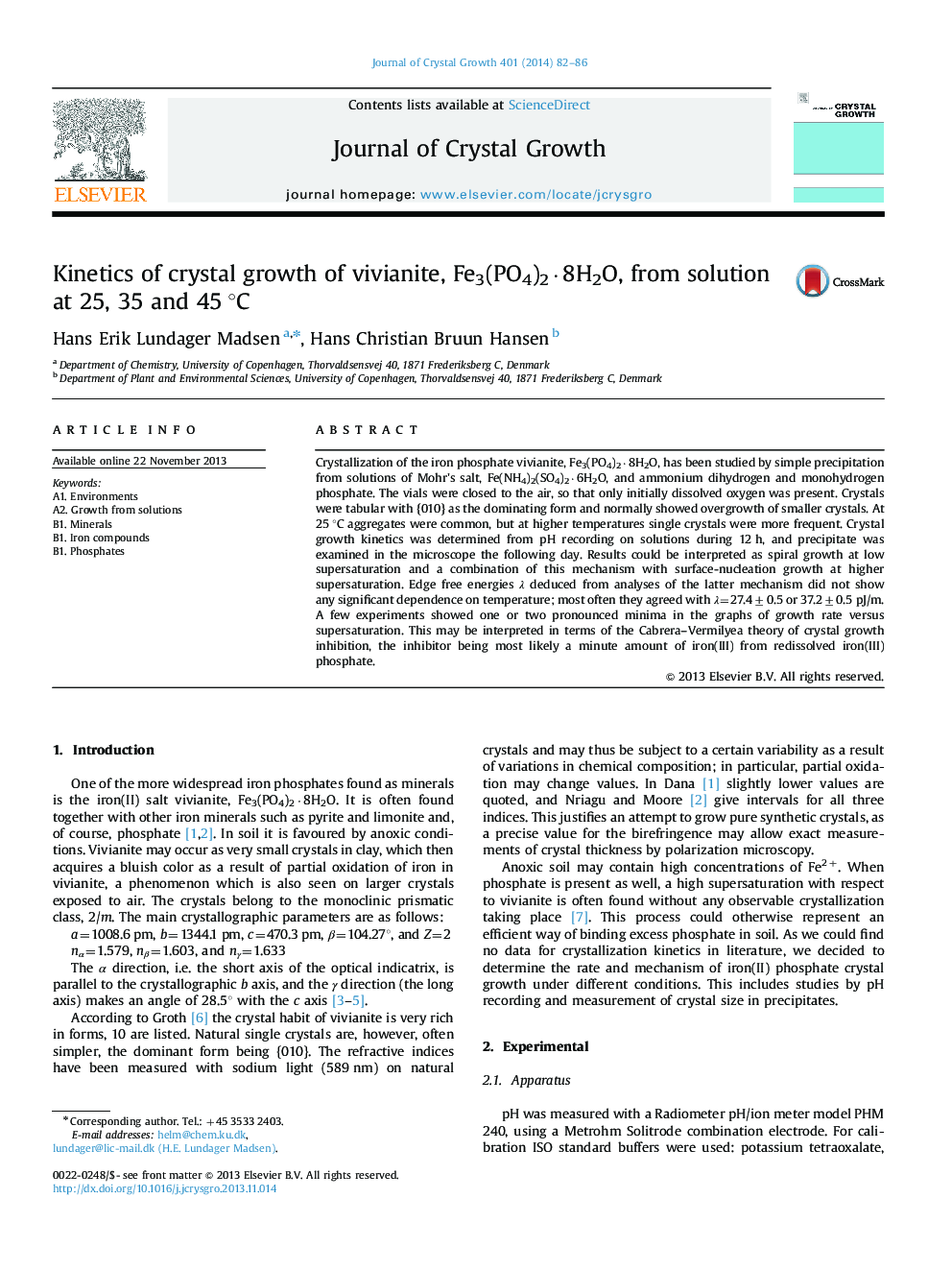| Article ID | Journal | Published Year | Pages | File Type |
|---|---|---|---|---|
| 1790307 | Journal of Crystal Growth | 2014 | 5 Pages |
•Crystal growth kinetics of vivianite has been determined from simple precipitation and pH recording.•Surface-nucleation kinetics yields edge free energy values of a magnitude typical for phosphates of divalent metals.•Small amounts of iron(III) cause growth rate minima in agreement with Cabrera–Vermilyea theory of crystal growth inhibition.
Crystallization of the iron phosphate vivianite, Fe3(PO4)2·8H2O, has been studied by simple precipitation from solutions of Mohr's salt, Fe(NH4)2(SO4)2·6H2O, and ammonium dihydrogen and monohydrogen phosphate. The vials were closed to the air, so that only initially dissolved oxygen was present. Crystals were tabular with {010} as the dominating form and normally showed overgrowth of smaller crystals. At 25 °C aggregates were common, but at higher temperatures single crystals were more frequent. Crystal growth kinetics was determined from pH recording on solutions during 12 h, and precipitate was examined in the microscope the following day. Results could be interpreted as spiral growth at low supersaturation and a combination of this mechanism with surface-nucleation growth at higher supersaturation. Edge free energies λ deduced from analyses of the latter mechanism did not show any significant dependence on temperature; most often they agreed with λ=27.4±0.5 or 37.2±0.5 pJ/m. A few experiments showed one or two pronounced minima in the graphs of growth rate versus supersaturation. This may be interpreted in terms of the Cabrera–Vermilyea theory of crystal growth inhibition, the inhibitor being most likely a minute amount of iron(III) from redissolved iron(III)phosphate.
